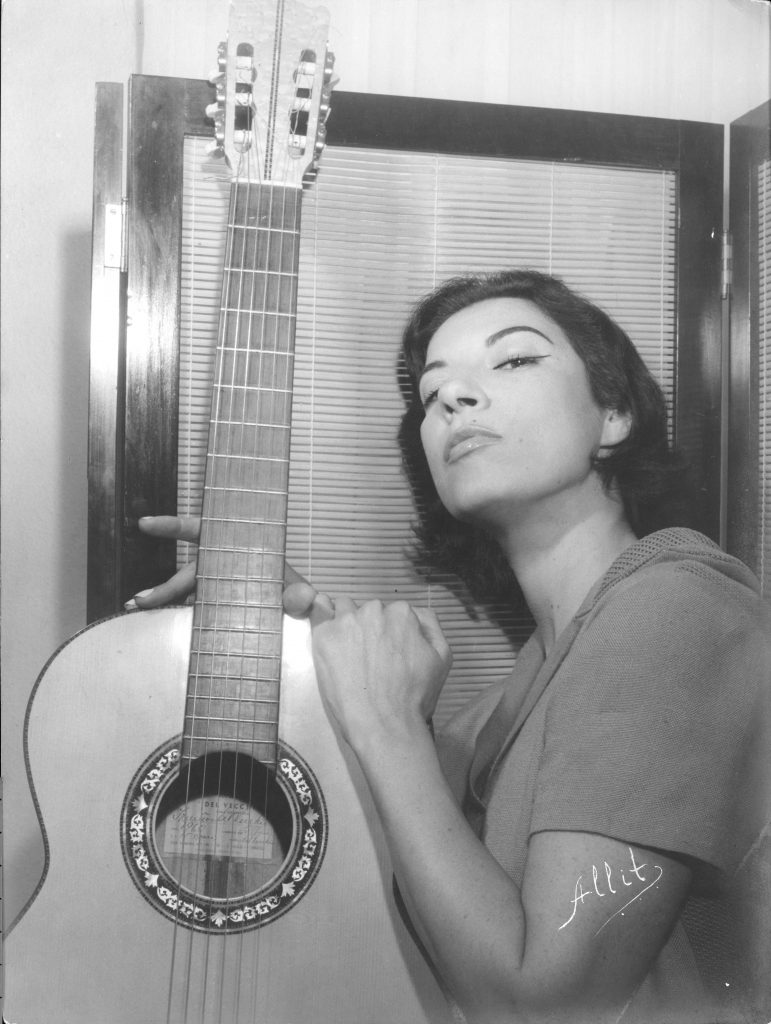

Seção de vídeo
The artist
Inezita Barroso, the life [chapter: The artist]
By Paulo Freire*
* Curator of Ocupação Inezita Barroso, Paulo Freire tells the story of a 90-year-old lifetime, full of music and storytelling. Divided into six chapters (The girl, The family, The artist, The researcher, Ohh, how I love this show! and A legacy), the narratives spread through the site, mapping the life of one of the most important artists of Brazilian popular culture. Welcome to the beginning of this beautiful journey.
Artists met several times at Inezita and Adolfo’s house. In these meetings, she proved to be a great interpreter of Noel Rosa, a performance that would bother some singers from Rio, who were jealous of such a talented samba singer.
One night, Alberto Cavalcanti – famous produced hired by Vera Cruz movie company – saw Inezita singing at Teatro Brasileiro de Comédia (TBC) and invited her to an audition for actress in the movie Angela, in 1951. From that moment on, Inezita Barroso’s life became a real whirlwind.
In 1952, she acted professionally for the first time at Teatro Santa Isabel, in Recife (PE), including being paid for it. The initial proposition was a five-day stay, which lasted two months! Thanks to the huge success, Inezita was invited to several shows, travelling in the area and having contact with the regional popular culture.
In the same year, she was admitted at Rádio Nacional. In 1953, was called to record her first commercial album: “Moda da Pinga” on one side; “Ronda” on the other, song that would be Paulo Vanzolini’s great success. In 1954, she moved to TV Record and Eduardo Moreira was her producer for many years ahead.
She recorded albums with repertoire of different Brazilian regions – the album Danças Gaúchas was adopted in the schools of Rio Grande do Sul. She started to record songs that were fading to oblivion. At Vera Cruz, she made the movie Mulher de Verdade, released in 1955. With this production, she was awarded best actress at Prêmio Saci.
Her albums counted on great orchestras and original arrangements. She had a close relationship with Guerra Peixe, Hervé Codovil and Radamés Gnattali. She took part on other movies. Had a fully booked schedule of shows, had radio and TV programs. Was awarded best singer at Prêmio Roquete Pinto for several consecutive years. Was considered one of the most important Brazilian artists and was always on the head news. Was invited to meetings with chiefs of government, sang “modinhas” with the governor of Minas Gerais and the president Juscelino Kubistchek. Always with her guitar or viola, reinforcing the importance of celebrating folk music.
Inezita was invited to star Jovita, based on the tale of Dinah Silveira de Queiroz. The movie told the true story of the Brazilian heroine who wanted to fight the war against Uruguay. She identified herself with the character, who loved her country and needed to fight for it. She longed to know the reality of that woman from the “sertão” and planned a car trip from São Paulo to Belém do Pará!
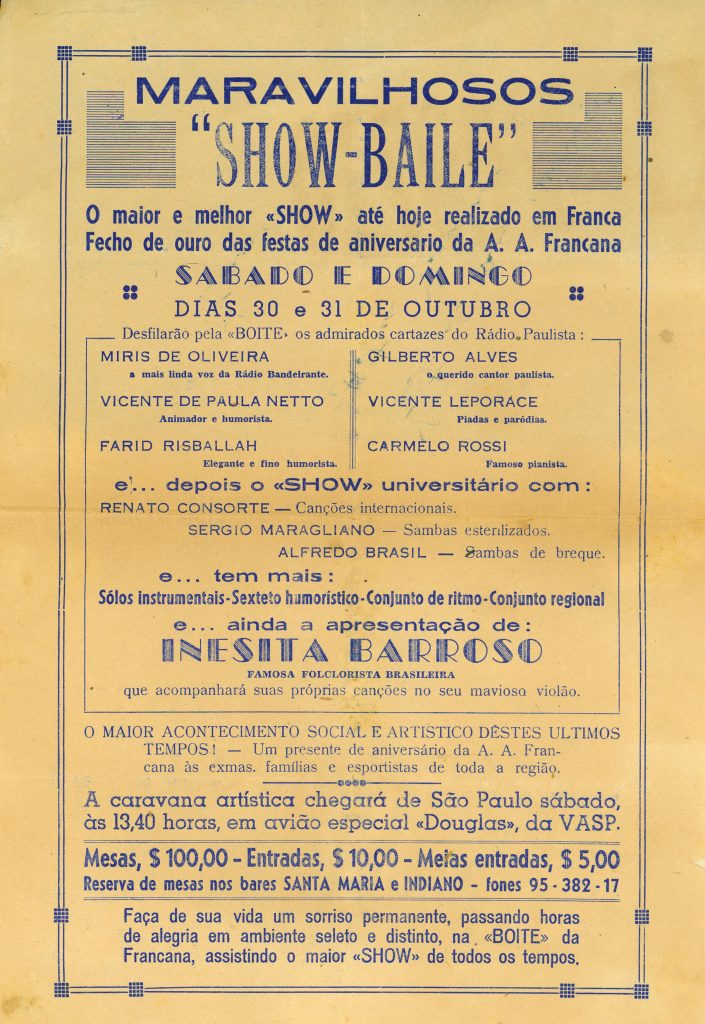
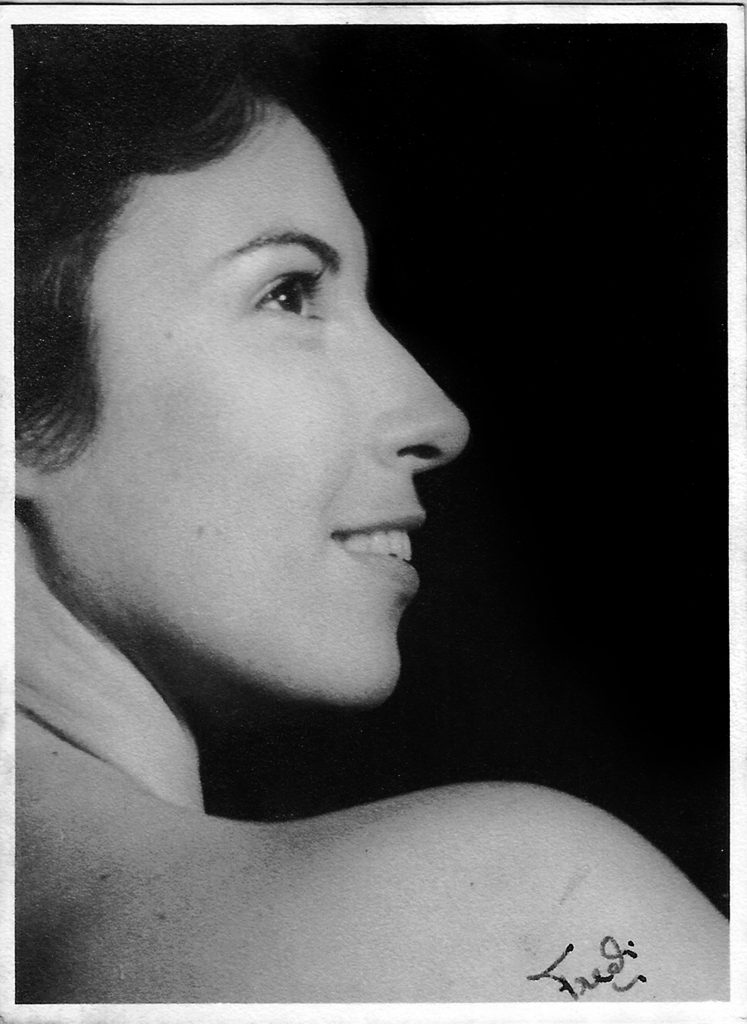
Staring

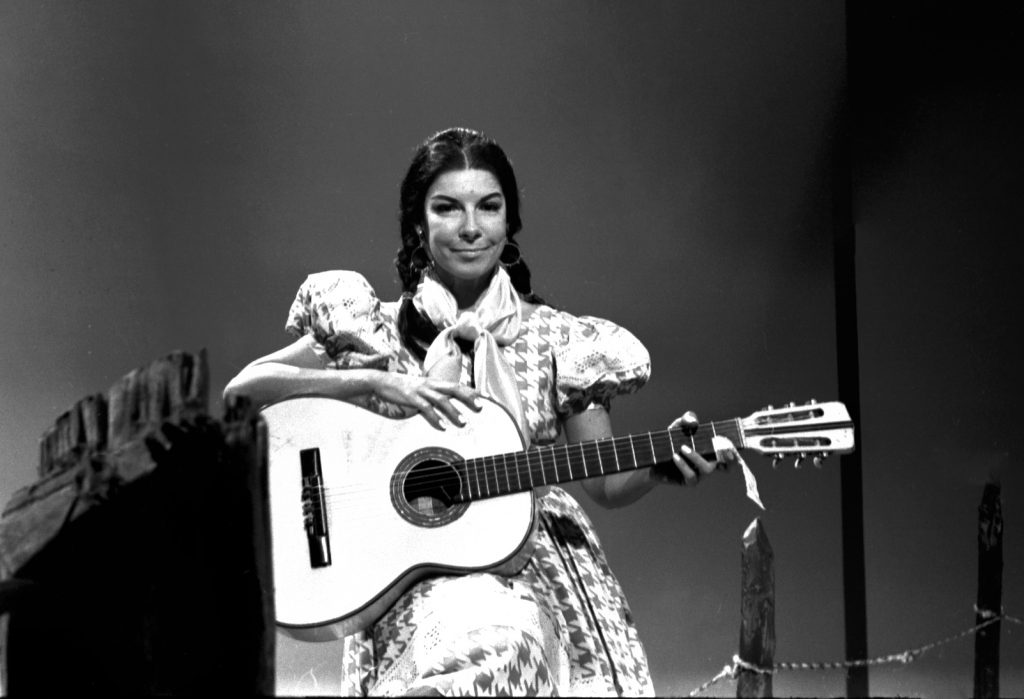
Inezita with open arms
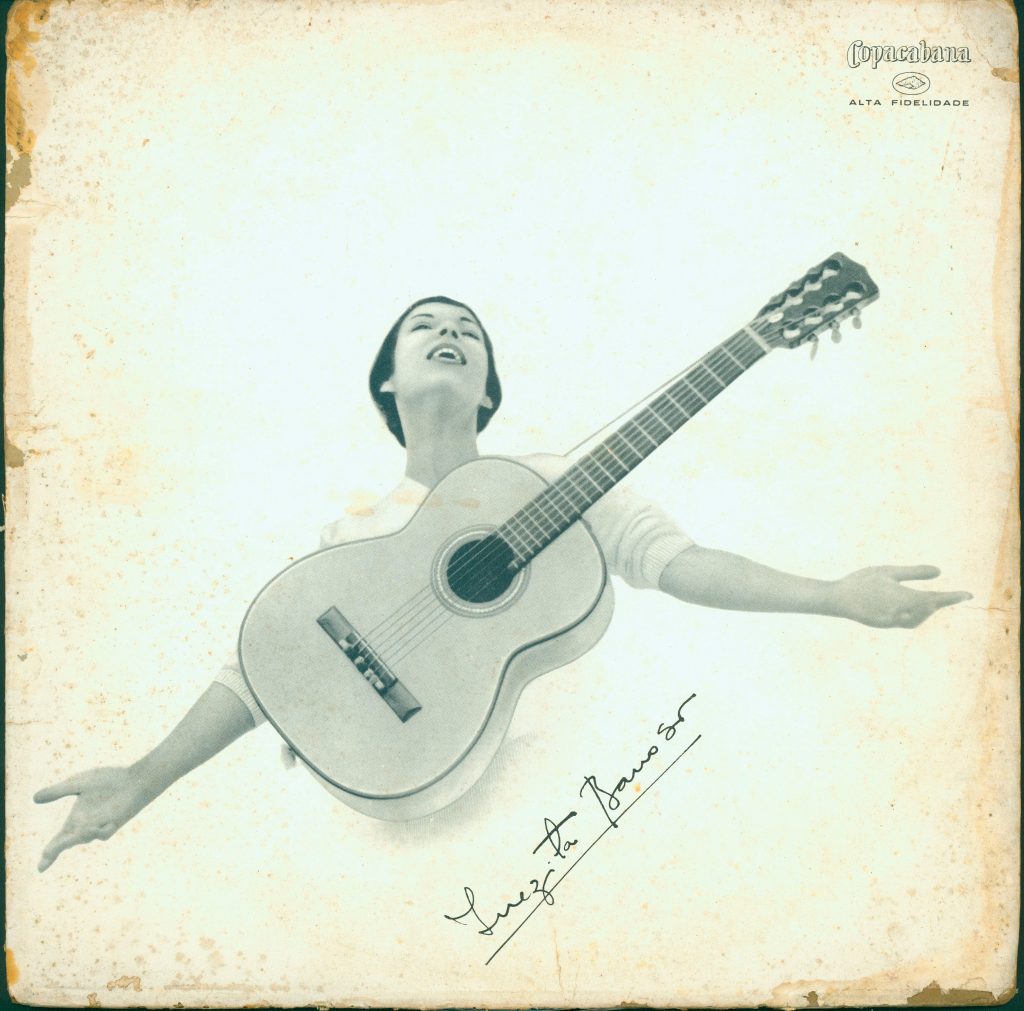
By Aloisio Milani
Inezita recorded herself and wrote a lot during her career. Whenever possible, she recorded her voice, as well as singings from family and friends. She pressed REC in hundreds of magnetic roll-tapes, cassete tapes and VHS. However, even in this uncountable tapes and manuscripts, none covered widely and deeply her discography, or analyzed the context and the creative process of her albums, track by track.
This gap was an excuse to call Inezita and propose writing a book on her recording works. This was in 2014, her last year as a singer. At the age of 89, full of energy and ideas, she agreed without hesitation. The project was to write a book commenting on her discography, registering historic compositions and naming the peer musicians. A long task, since original albums surpassed 80.
Some interviews were made, but there was a small part still missing before the work would be concluded. One of them is here, with the original material for Ocupação Inezita Barroso. The album Inezita talks about is her first 12 inches LP, released by Copacabana, in 1958. “Vamos falar de Brasil” has a white cover, in which Inezita turns herself to the sky and seams to hand herself over completely to the music, with her guitar on the chest.
The audio of this interview (listen below) was recorded via cellphone on the table of Inezita’s living room. The original has about 40 minutes and has a lot of her particular universe: birds singing, dog barking, phone ringing. Her house was like this. Inezita was elderly, the chat wasn’t clear and presented some memory lapses. However, even with some details missing, the strength of her musical life was present, strong, creative and diverse, personified in many Brazils.
Vamos Falar de Brasil (1958) Long Play
Inezita Barroso’s first LP, released by Copacabana record label, had 12 tracks. The last song was also one of her first, “Moda da Pinga”. Inezita also released “Lampião de Gás”, another classic, in the same label. But there was “Ismália” as well, a poem by Alphonsus de Guimarães, with music by Capiba, “Lua, Luá”, “Peixe Vivo” and “Azulão”.
The repertoire was created based on research, but also by three friends who lived intensively the musical world: Thalma de Oliveira, her producer at Rádio Record; Eduardo Moreira, her producer at TV Record; and Hervé Cordovil, regent and composer.
The cover of the album came from the last picture of a long photo shot, during a day when a migraine was driving Inezita crazy. Not being able to stand any more pictures, she opened her arms, tired, and the emblematic image was born.
TRACK 1
Inezita talks about the long play Vamos Falar de Brasil, from 1958.
TRACK 2
SIDE A
“Retiradas” (Oswaldo de Souza)
The first music is inspired in a northeastern-cowboy call, the “aboio nordestino”, which was adopted by Inezita as the opening spot of her musical program at TV Record, at channel 7, at 20h30 on Fridays. Inezita and her guitar would simply open the album.
TRACK 3
“Peixe Vivo” (folk from Minas Gerais/adaptation of Rômulo Paes and Henrique de Almeida). Folk theme from Minas Gerais was adapted and recorded in the album for the first time by Inezita. The music was the favorite of Juscelino Kubitschek, fact that made the friendship between the singer and the politician even closer. He signed this white guitar shown in the LP cover.
TRACK 4
“Engenho Novo” (Heckel Tavares)
In Inezita’s musical researches, Heckel Tavares was one of her favorite composers. The artist met him in one of her trips to the northeast region. The recording counts on maestro Hervé Cordovil’s orchestra.
TRACK 5
“Zabumba de Nego” (Hervé Cordovil)
Friend and collegue of maestro Hervé Cordovil, Inezita had already recorded other songs by him before. This one follows the composer’s line of research and creation based on popular songs. The music also came from the life repertoire she presented at TV Record.
TRACK 6
“Lampião de Gás” (Zica Bergami)
During one of the recording days at TV Record, Zica Bergami handed a long lyric and music to maestro Hervé Cordovil evaluation. He shared it with Inezita, reduced the lyric and tested the music on TV – a success that would be released on this album.
TRACK 7
“Ismália” (Alphonsus de Guimarães/Capiba)
“Quando Ismália enlouqueceu” was the opening of this Alphonsus’ poem, performed by the group Jograis de São Paulo. The northeaster composer Capiba set the music to the poem, in a modest and dramatic orchestration.
TRACK 8
SIDE B
“Festa do Congado” (Juracy Silveira)
Inezita tries to recall the name of the percussionist from Hervé Cordovil’s orchestra, because he is the one to set the rhythm of the imagination of congados and of the amazing interpretation which she loved so deeply. The first music by Juracy Silveira, a composer from Minas Gerais.
TRACK 9
“Temporal” (Paulo Ruschel)
From Rio Grande do Sul, Paulo Ruschel was Alberto Ruschel’s brother, with whom Inezita acted in the movie business. Orchestrated by Hervé, the song describes a sea storm.
TRACK 10
“Lua, Luá” (Catulo de Paula)
Surrounded by great musicians in recordings, Inezita knew when and where to play. Answering the question “whose is the guitar that follows the music?”, the singer simply answered: “Mine”. Catulo himself delivered this music into her hands.
TRACK 11
“Azulão” (Jayme Ovalle/Manoel Bandeira)
It’s one of Inezita’s favorite songs, with many lyric interpretations that didn’t pleased the singer. Here, it’s released with musical support from the group Regional do Miranda, hired by Rádio Record.
TRACK 12
“Seresta” (Georgina Erismann)
Another song wit musical support by the group Regional do Miranda and with lyric that made Inezita laugh. Composer Georgina Erismann was recorded before by Olga Praguer Coelho, guitar player and singer.
TRACK 13
“Moda da Pinga” (Laureano/Raul Torres)
Music of her second album, the first well succeed one; Inezita recovers her success playing the viola. Information on the back cover wrongly assigns the authorship of the guitar sound to the singer, as well as the composition to Laureano and Raul Torres. Inezita would disagree with this information for the rest of her life, since she assured the music was of oral public domain, built collectively during “rodas de viola” in the countryside.
Aloisio Milani is a journalist and cultural producer. Worked at TV Cultura as screenwriter and producer of Viola, Minha Viola. He took part on the curatorship of Virada Cultural of 2015, which rendered tribute to Inezita Barroso. Together with Inezita’s daughter Marta, works to organize and spread the singer’s legacy.
Seção de vídeo
Full artist
Images provided by Fundação Padre Anchieta (TV Cultura) to Ocupação Inezita Barroso

Seção de vídeo
Moda da Pinga
Images provided by Fundação Padre Anchieta (TV Cultura) to Ocupação Inezita Barroso
Seção de vídeo
Movie career
Images provided by Fundação Padre Anchieta (TV Cultura) to Ocupação Inezita Barroso
Inezita at the movies
-
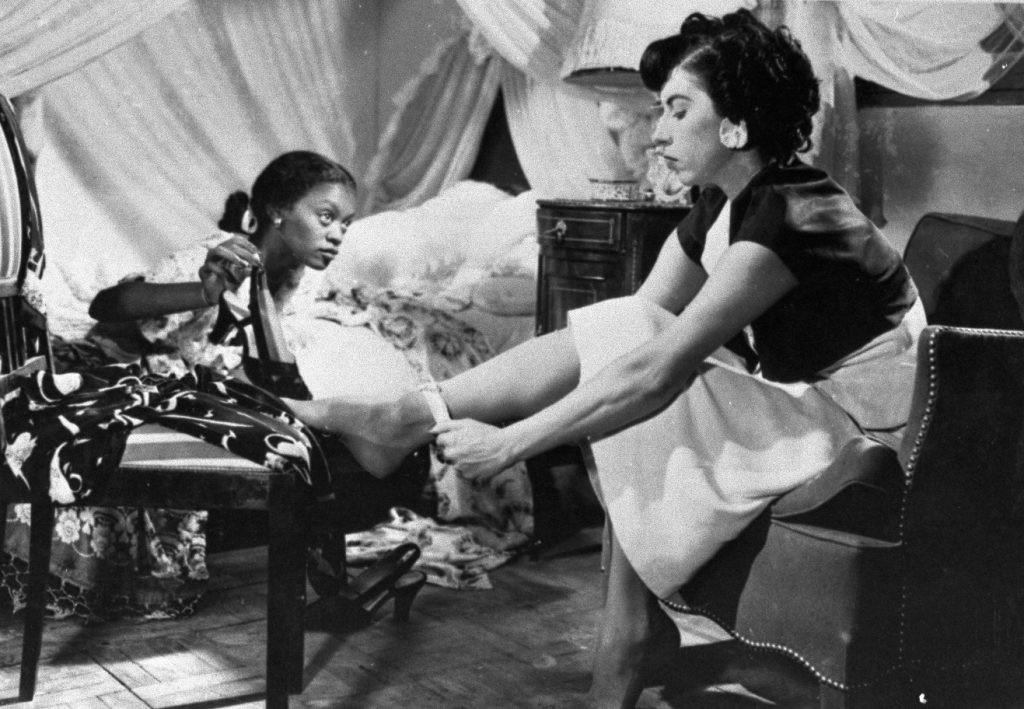
Inezita e Ruth de Souza em cena do filme Angela (1951), de Abilio P. de Almeida e Tom Payne | foto: Danilo Pavani/Cedoc TV Cultura
-
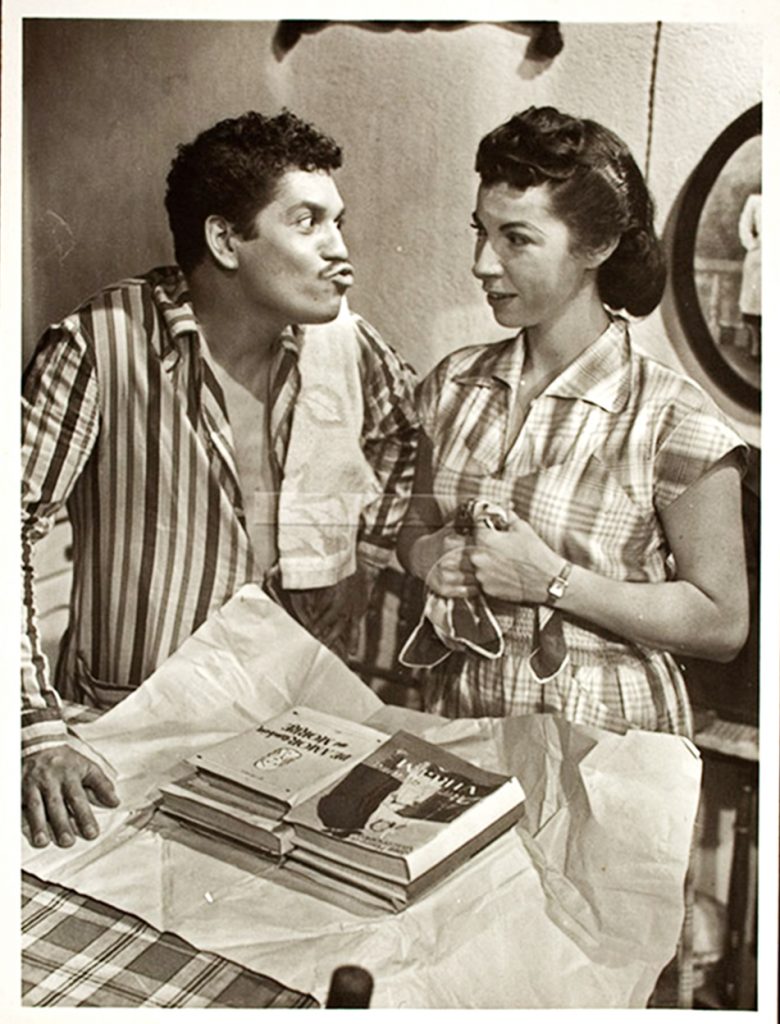
Colé Santana e Inezita Barroso em "Mulher de Verdade" (Alberto Cavalcanti, 1953) | foto: acervo pessoal
1/10
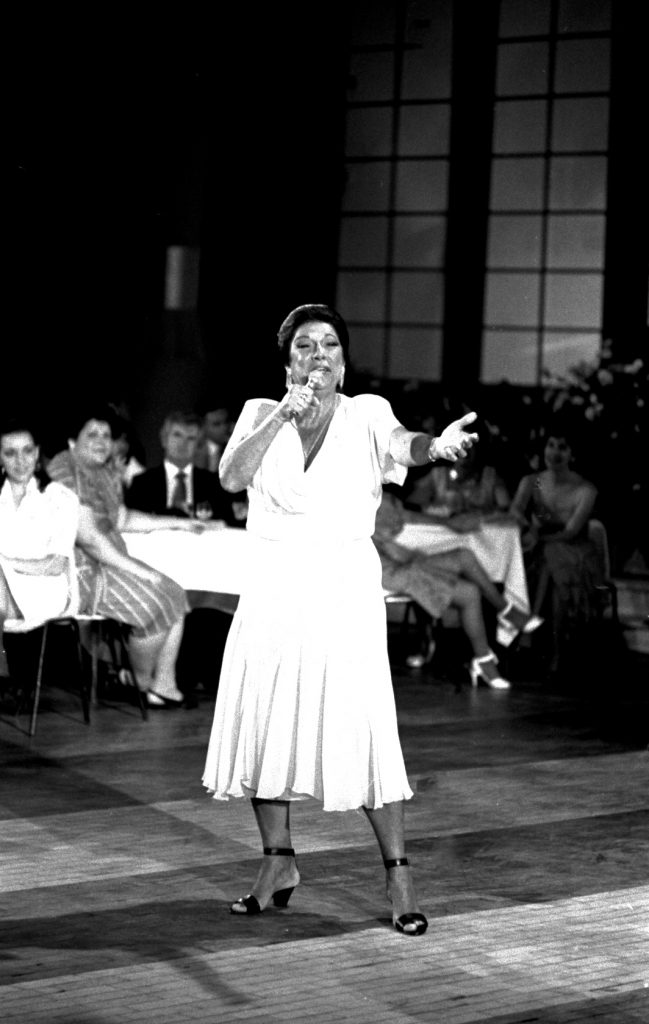
Gift
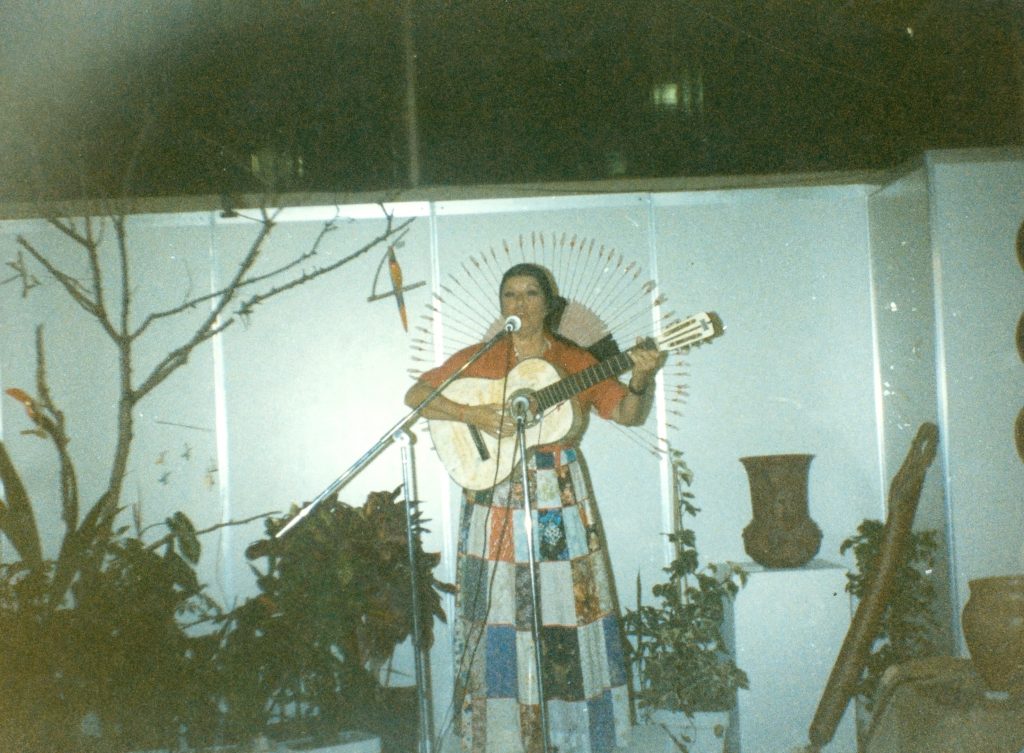
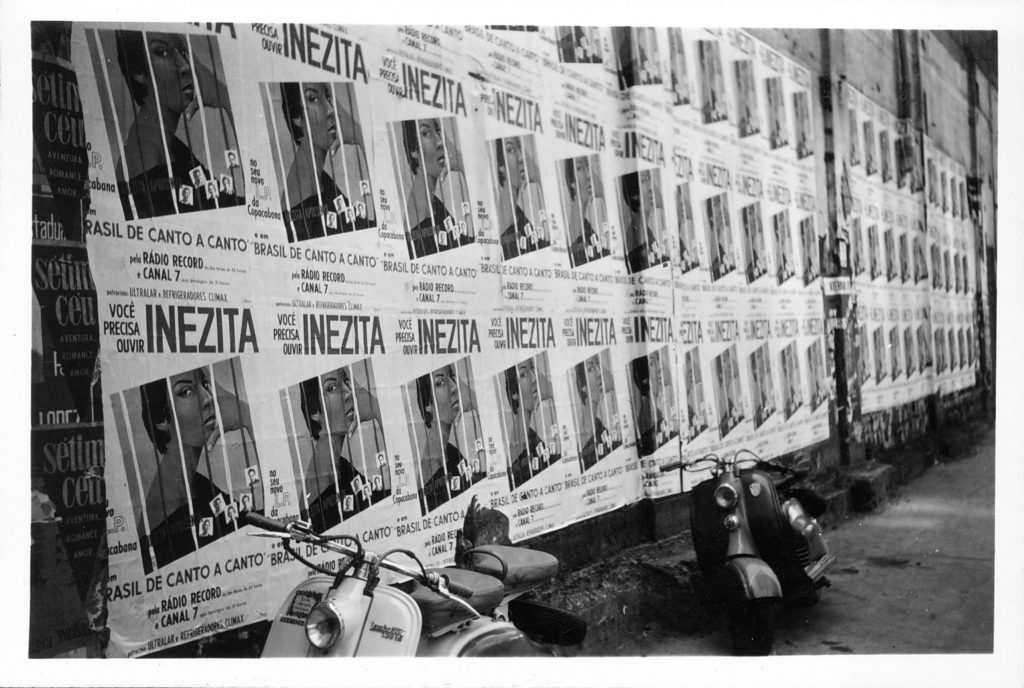
Inezita’s flaws
By José Hamilton Ribeiro
– Inezita has one flaw.
Words said by Dino Franco, at his house in Rancharia (SP). He is the greater reference of the second generation of “caipiras”. The first one included the “patriachs”, the creators of the genre, the group of Raul Torres, Tonico & Tinoco, Carreirinho, Mário Zan, Alvarenga & Ranchinho, plus other eight or nine, who were the pioneers in bringing to the city the music born in the countryside.
Dino Franco is one of the youngest, but as great as the others in talent and in creating “modas” of quality. Among his recordings are state of the art songs such as “Cheiro de Relva”, “Ingrata” and “Caboclo na Cidade”, this last one with a funny lyric, telling the drama of a family that looses the roots of the countryside, but is not yet able to fit into the urban way of life. Dino Franco is in love with Inezita, but insists: “She has a flaw. And it’s serious!”.
I had this in mind the last time I’ve been to Inezita’s home, at Rua Gabriel dos Santos, near Avenida Angélica, in São Paulo. we had a multiple chat, with pauses into three subjects: 1. “Moda da Pinga”; 2. Inezita as a movie star; 3. The relationship between her mockingbird and a tuned up guitar.
- “Moda da Pinga”
There is an unforgettable video of Inezita singing “Moda de Pinga” at TV Cultura. Mastering the stage with her glorious charm, she acts as if she is really drinking something while singing the verses. Without her elegance, it could figure as being exaggerated, of bad taste or a caricature of a drunk person.
Inezita liked to talk about the song “Moda da Pinga” and about several other aspects of its reconding in Rio de Janeiro (in the 1950s, singers from São Paulo used to go to Rio to work). The first one concerns the fact that it was her first record, one with 78 rpm (with “Ronda”, from Paulo Vanzolini, on the other side, both songs in exclusive release). Second: the song didn’t fit the record – it was sang among “violeiros” in the farms and lasted all night long, going on for hours, always improvising. To fit in a 78 rpm – three to four-minute track –, the song had to be shortened, reducing it to a few verses. Until today, although the new media stands for longer songs, most part of it, including the “caipira”, lasts the same three and a half minutes. Third: “Moda da Pinga” should not have an authorship. It was created by “violeiros” from small ranches and farms, anonymous as time went by, always gaining one verse and another according to the moment.
Tinoco, from Tonico & Tinoco duo, used to say that their compositions were not invented by them, but were “scenes of life” they’ve gone through, or even songs that already existed and were told by an older relative or by someone from another farm. When they went to visit another ranch, they managed to learn the music from there. Classics such as “Chico Mineiro”, “Rio Pequeno” and “Moreninha Linda” were born that way. In the countryside, a song was like a bird: belonged to the person who caught it. It would belong to someone once in the city, in the radio, in a record, with register and copy rights.
What happened to “Moda da Pinga” was the rule. This guaranteed a varied and rich repertoire of songs to this first generation of caipiras, who could use the wide range of issues, dramas and contents, besides the melody, that existed for many years, maybe centuries, in the oral communication of the older ones. Today, this is a Brazilian cultural treasure: it represents the chronicle of Brazilian countryside men (called “caipira”), of a time Brazil was mainly an “agricultural country”, with more than 80% of the population in rural areas.
It’s possible that no countryman could describe its piece of land so detailed as the caipira music is able to do, providing information to research, through melody and lyrics. They carry the description of working habits, leisure times, beliefs and feelings, how people chose marriage partners, how they faced death. All written by great poets, the best ones, from the “real Brazil” of that time.
- Inezita at the movies
Folklorist and lover of regional culture (northeastern above all), Assis Ângelo, who lives in São Paulo for more than 30 years, wrote a poetic book about Inezita’s childhood. Two books are still missing: one about her as a singer, a master on caipira music, cultural enthusiast and national celebrity thanks to Viola, Minha Viola; the other about her time in the movie business.
The second book is guaranteed, since TV Cultura has the archives. Out of the blue, someone will do it. The third is more difficult, because the movies wouldn’t be enough and Inezita would be essential to talk about the time she was a young famous woman. What a woman! Discrete and reserved, she never encouraged talking about this subject.
- The mockingbird and the stubborn guitar
During our last interview, Inezita grabed the guitar to sing “Penas do Tiê”, but the strings were new and out of tune. She tried to figure out the chords needed, but couldn’t. Tried once more, got a better sound, but still was less than expected.
- You know what? I know how to fix it.
She entered the house. In the kitchen, there was a yellow brest rufous-bellied thrush, which was silent during the whole interview. Either she touched the cage, or said something, or gave it food, I don’t know – the fact is that the bird started to sing. When she came back to the living room, smiling, holding a small glass and happy for hearing the bird, grabbed the guitar and finally was able to tune it. Tested the throat, it was in good shape. The beauty of “Penas do Tiê” came together with Inezita’s brand: artistic excellence, authenticity and emotion. Before the beginning and laughing out louder, she explained:
– Did you see? I turned the mockingbird on!
…
– So what, Dino Franco, Inezita Barroso really has a flaw?
– Yes!
– Which is?
– She’s only one! In Brazil, as it is today, we’d need at least three of her…
…
(Dino Franco died in April, 2014, at the age of 77. He had 200 new lyrics to put music, what he used to do every week, taking care to make of each one the most beautiful composition ever.)
José Hamilton Ribeiro is a journalist at Globo Rural, author of Música Caipira – as 270 Maiores Modas, among other books, which has a selection of the best compositions of the genre until today, with stories and analysis.
Seção de vídeo
Azulão
Images provided by Fundação Padre Anchieta (TV Cultura) to Ocupação Inezita Barroso
Seção de vídeo
Mockingbird
Images provided by Fundação Padre Anchieta (TV Cultura) to Ocupação Inezita Barroso
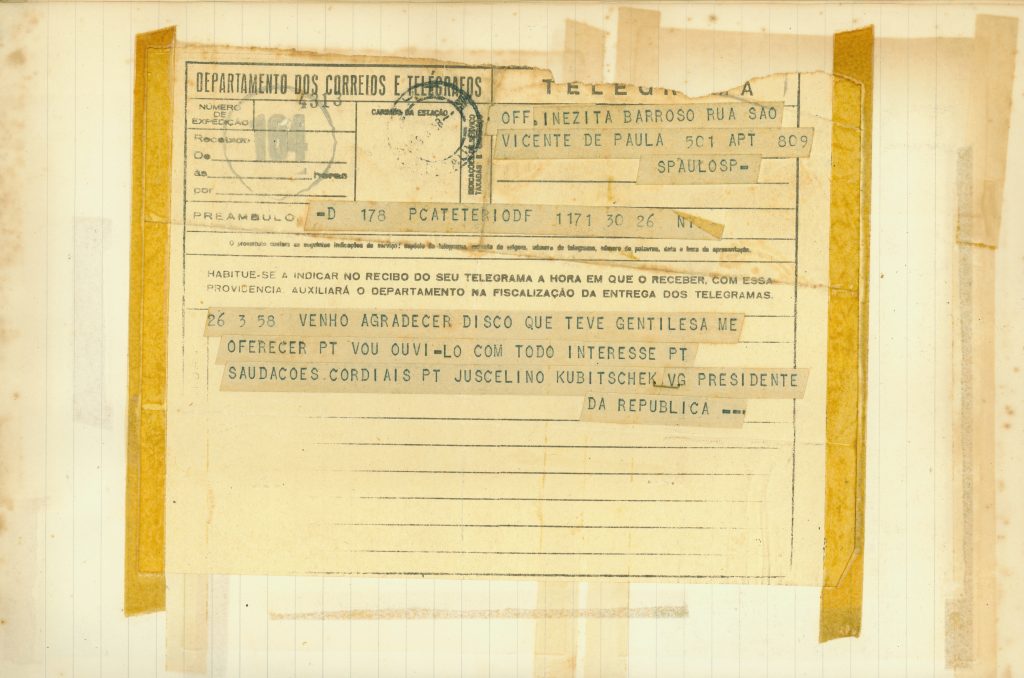
Seção de vídeo
"Where I go, my viola goes with me."
Images provided by Fundação Padre Anchieta (TV Cultura) to Ocupação Inezita Barroso
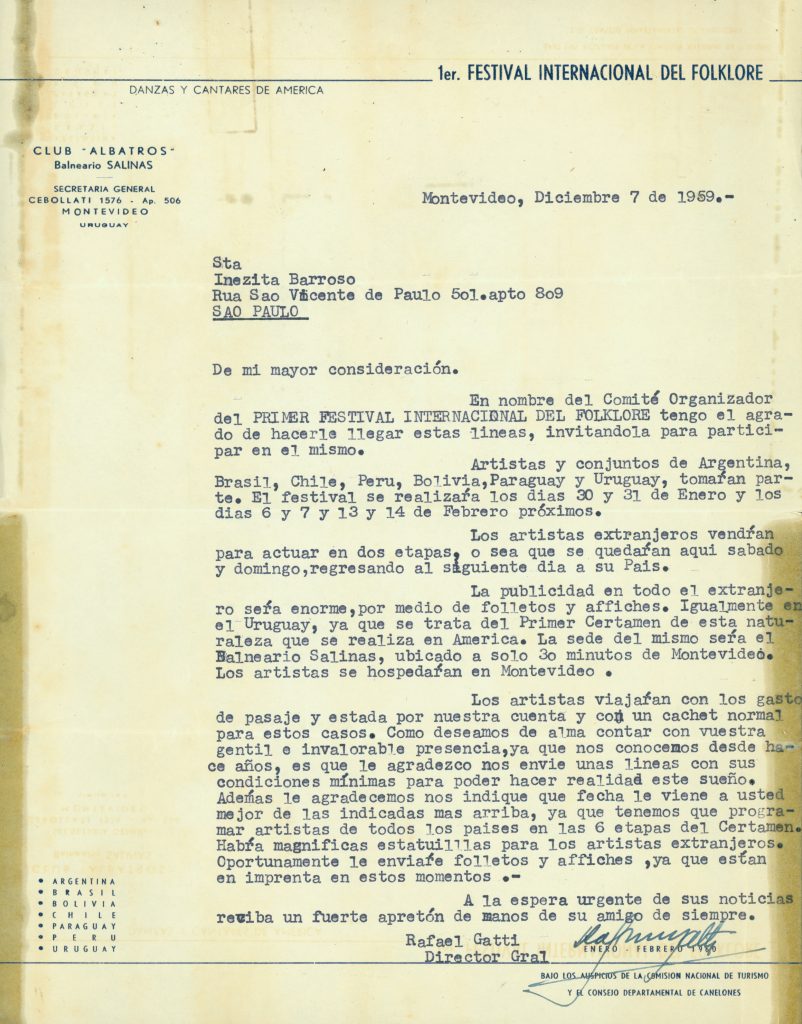
Seção de vídeo
Tristeza do Jeca
Images provided by Fundação Padre Anchieta (TV Cultura) to Ocupação Inezita Barroso
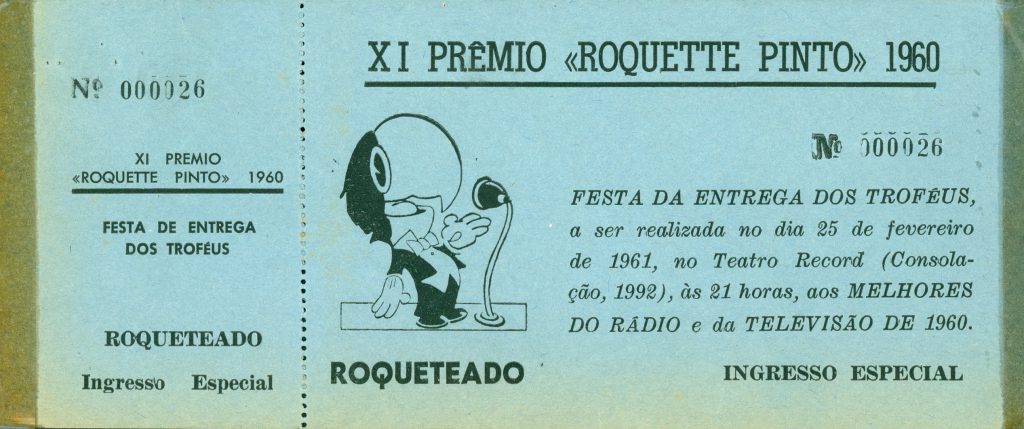
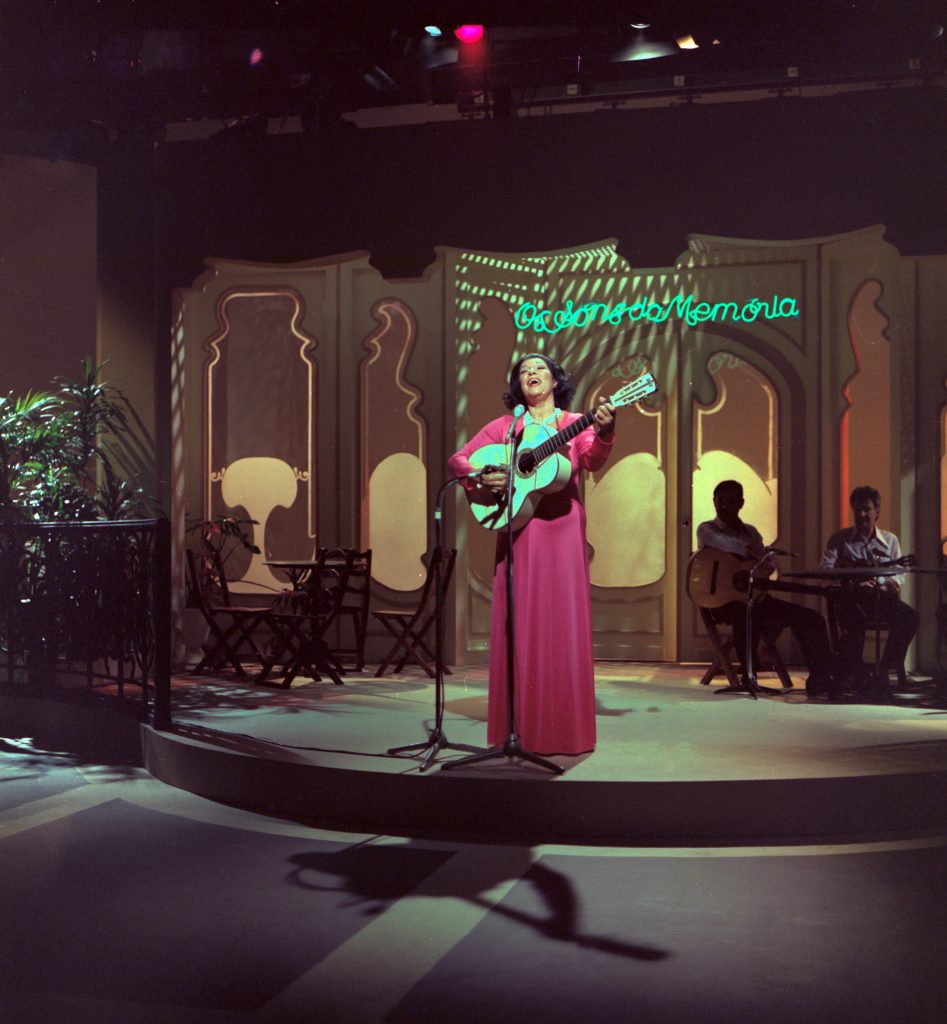
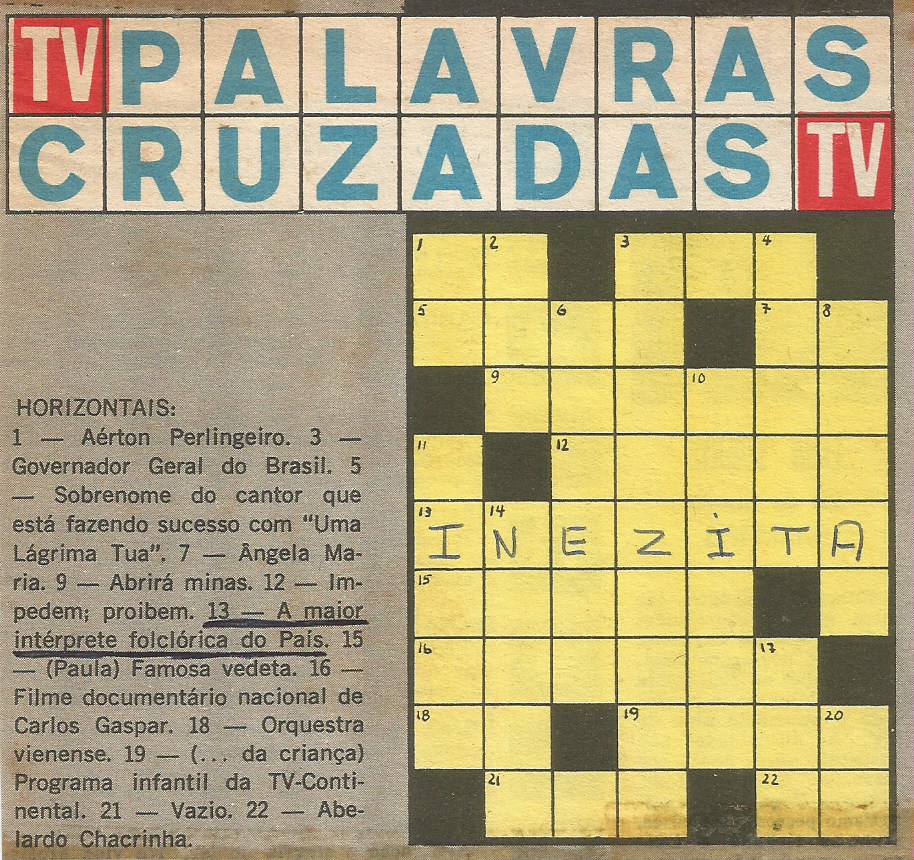
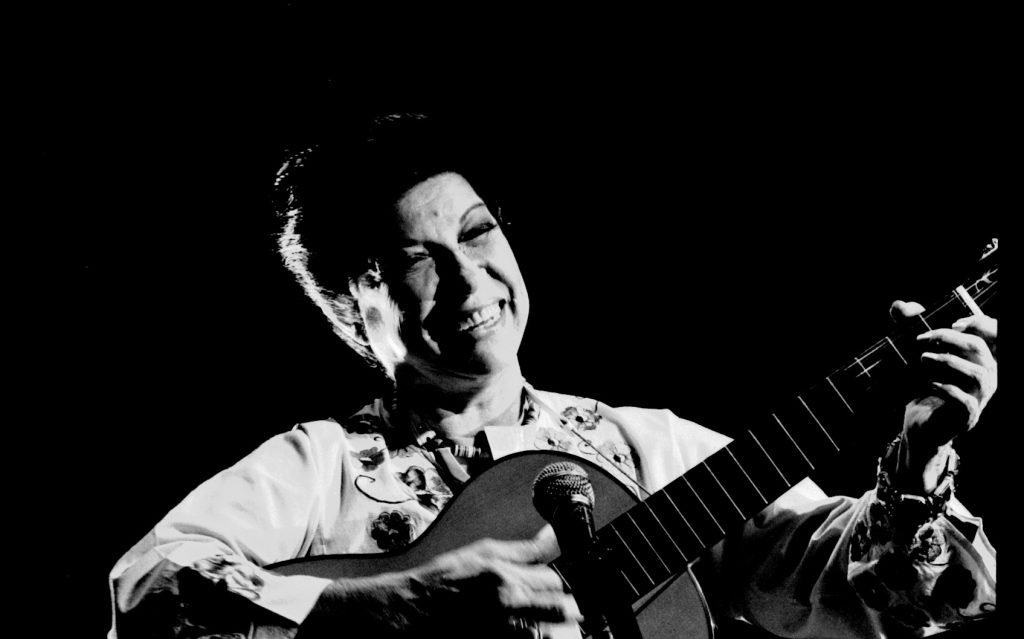
Seção de vídeo
How Inezita promoted herself
Images provided by Fundação Padre Anchieta (TV Cultura) to Ocupação Inezita Barroso